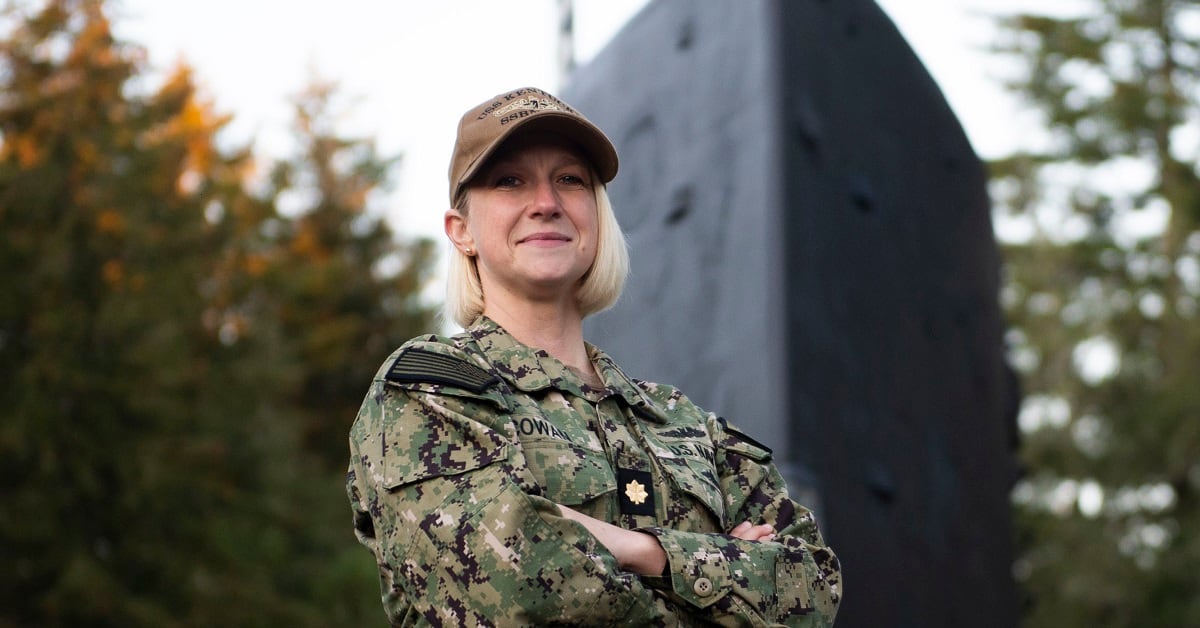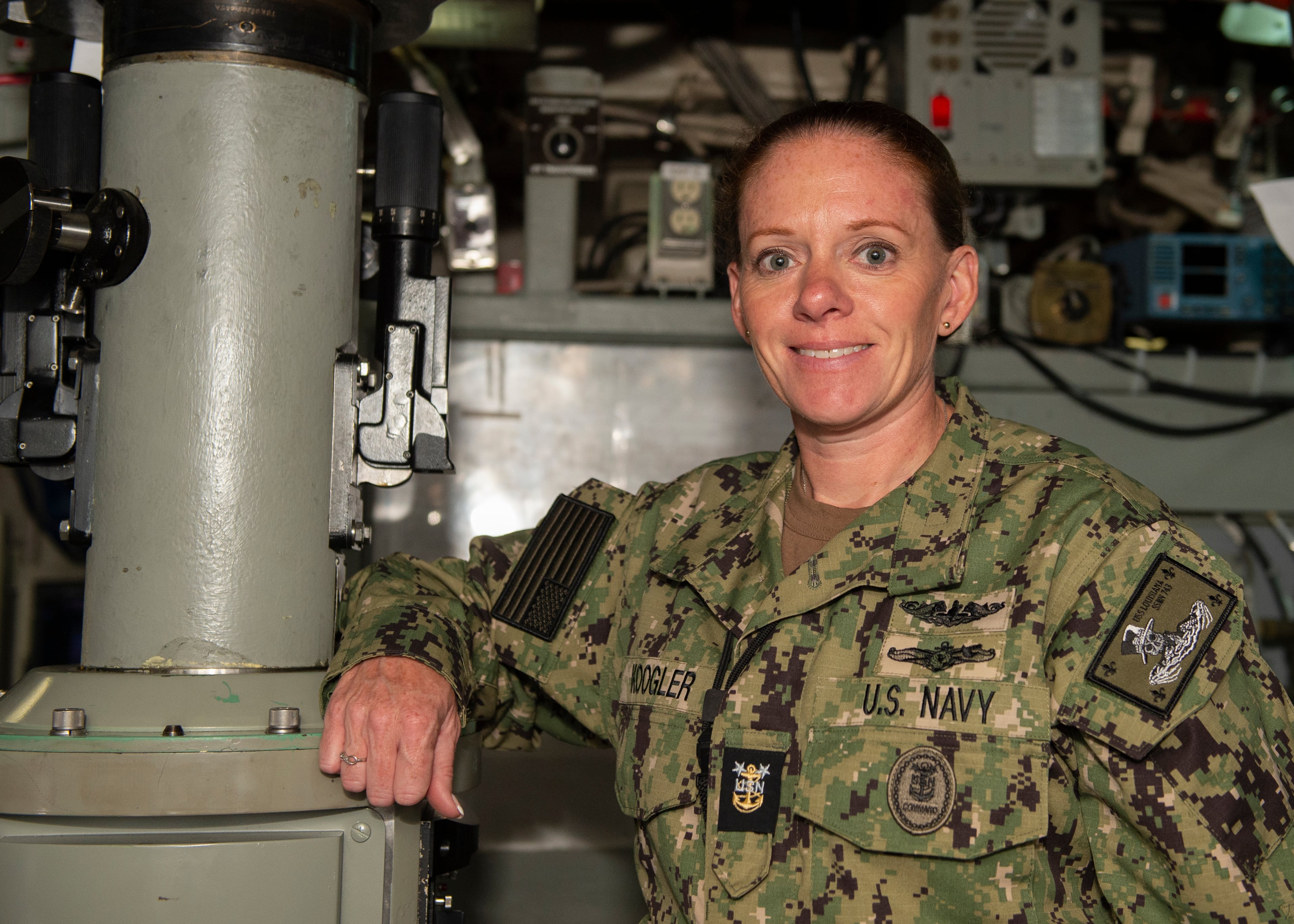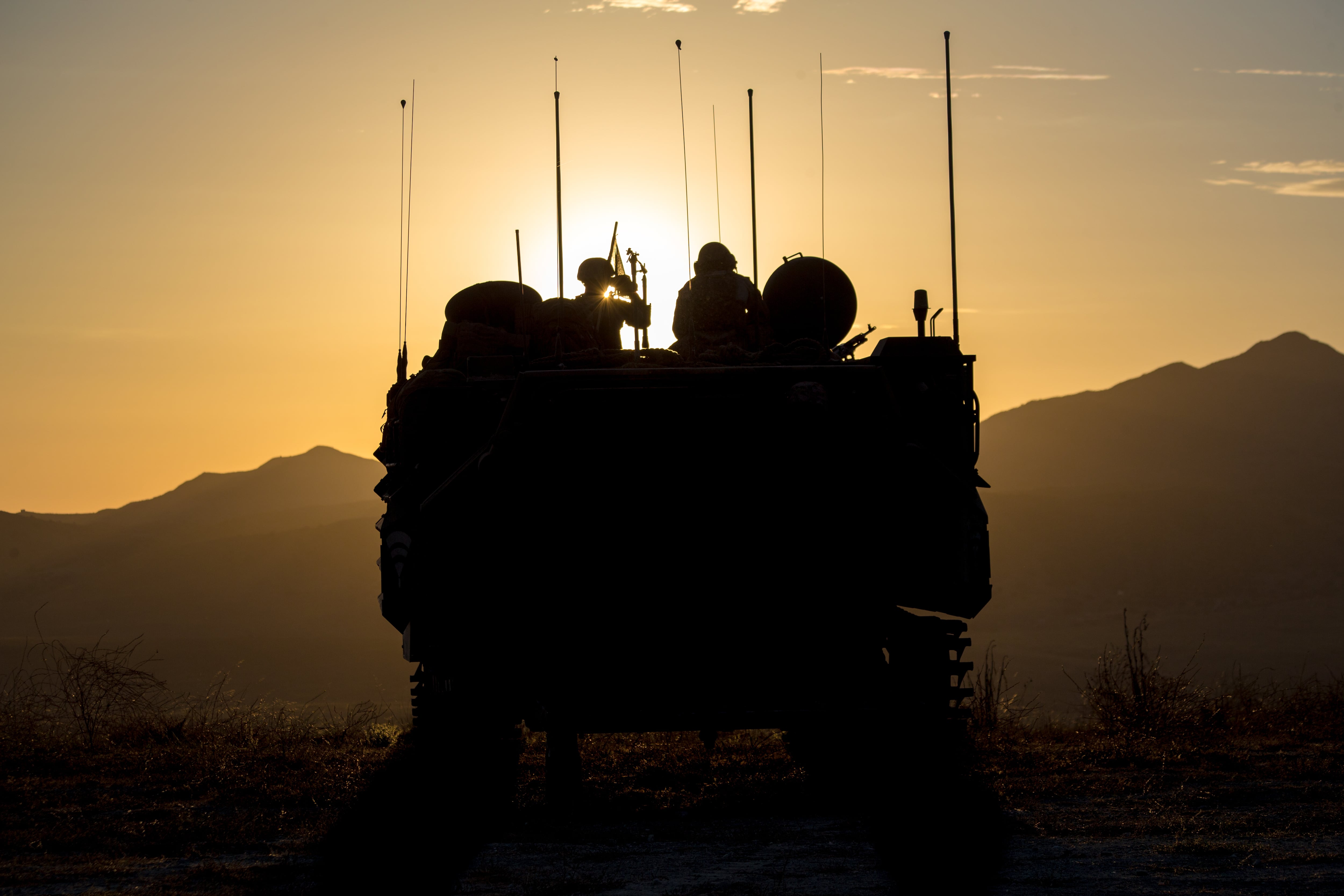The Navy plans to expand the number of submarine crews that women can serve with, after doubling the number of female officers coming into the community in recent years, but not yet increasing the number of boats with gender-integrated crews.
Vice Adm. William Houston, the commander of Naval Submarine Forces, last month signed a “major revision” to the force’s gender integration plan that would allow females to serve in all submarine homeports.
San Diego will host integrated crews by the end of this year, with Guam following suit next year, Houston said Nov. 7 at the Naval Submarine League annual symposium.
That plan will increase the number of subs that female officers can serve on from 30 to 40 boats, he said.
The Navy has 69 boats: 51 attack subs and 18 Ohio-class ballistic missile and guided-missile submarines.
RELATED

On the enlisted side, 14 crews have female sailors today, and that will grow to 20 crews by 2027 under the plan.
Houston noted part of that will involve women serving on eight attack submarines, up from the two boats in that category currently hosting female crewmembers.
That move follows female officers who pushed to serve on the smaller attack subs after initially being assigned to only the larger Ohio-class boats.
Houston noted that, in some ways, all submarines are gender-neutral today, and all boats can accommodate women.
“Right now I have crews that are not integrated that have multiple female officers assigned to them and serving on them in a temporary status to get deployment experience,” he said. “We do that routinely. Direct support elements, shipyard workers, contractors, squadron staff, inspection teams — every submarine can embark women right now.”
The issue, he said, is that the force has so far kept women assigned to crews on certain submarines for berthing purposes.
That has led to situations where some submarines actually have more female officers than male. Minnesota, for example, has 10 female officers in a wardroom of 17.
“We doubled the number of female officers we were bringing in, but we hadn’t changed the number of platforms that they were assigned to,” Houston said.
RELATED

He noted that the sub community now has two female executive officers, or XOs, and they are assigned in a gender-neutral manner, with both women serving on non-integrated boats as the only women in the crews.
Houston said female officer retention in many year groups exceeds male retention, as does promotion rates.
On the enlisted side, he said that, as the number of enlisted female accessions in the community continues to grow, so too will the number of boats to which they’re assigned.
The number of women enlisting in non-nuclear submarine rates doubled from 80 in fiscal 2019 to 160 in fiscal 2023, according to Naval Submarine Forces officials.
Houston pointed out that the first female chief of boat recently helped bring the Louisiana out of a major maintenance availability that included refueling the sub’s nuclear reactor.
“Our female officers are crushing it,” Adm. Frank Caldwell, who leads Naval Reactors and the naval nuclear community,” said at the Submarine League event. “They have really done a fantastic job.”
Asked during his remarks when the Navy might see a female commanding officer, Caldwell noted that it might be another four years because the two female sub XOs today would have to do a couple shore tours ahead of entering the pipeline for command
Caldwell and Houston also talked more broadly about submarine recruiting and retention issues during the Sub League event.
Caldwell said the Covid-19 pandemic had created some recruiting gaps they still need to close. The community is meeting its ROTC goals and is nearing its goals at the U.S. Naval Academy.
But it’s struggling with the Nuclear Power Officer Candidate pipeline, which pays students while they earn an undergraduate or graduate degree in nuclear engineering and brings them in as nuclear naval officers upon graduation.
The sub force is looking at accession bonuses and signing people earlier to address remaining gaps, Caldwell said.
Houston said that, once officers are in the submarine community, he’s trying to entice them to stay.
The Navy already implemented a junior officer split tour initiative, where officers serve both on a submarine in the repair yard and a submarine in the fleet during their first tour — meant to avoid assigning them entirely to boats in long-term repair, where the officers may not be able to get all the qualifications and experience they’d need to be successful in later assignments.
Houston said he also put in place a “direct to department head” option where, if a young officer wanted to, they could serve a junior officer tour, go to department head school, and then do their department head tours all in the same homeport.
He’s looking at whether it’s feasible to extend this to a “direct to command” option, where the officer would also do their executive officer tour and commanding officer tour back-to-back in that same homeport.
Houston said he thinks the bulk of officers would choose the traditional career path, but because the service is small enough, it can adapt if needed.
“If we want to retain the best people, we have to have the best, most flexible career path,” he said. “And that is really what our goal was with that.”
Megan Eckstein is the naval warfare reporter at Defense News. She has covered military news since 2009, with a focus on U.S. Navy and Marine Corps operations, acquisition programs and budgets. She has reported from four geographic fleets and is happiest when she’s filing stories from a ship. Megan is a University of Maryland alumna.





